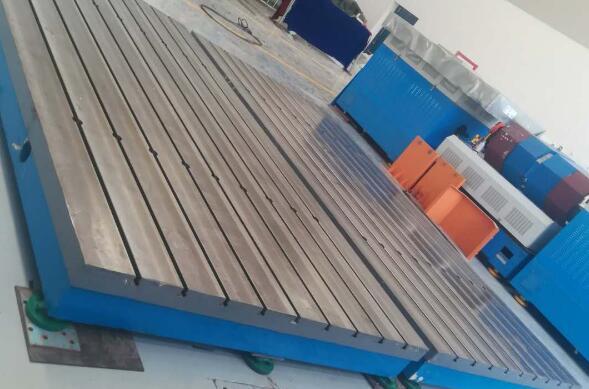Cast iron platform manufacturer
Apr 15,2024

Cast iron platform is a tool for precision measurement and calibration, and its accuracy level is of great significance for different application scenarios and requirements. In general, the accuracy level of cast iron platform can be divided according to its machining accuracy, geometry and surface flatness.
First of all, the accuracy level of the cast iron platform can be divided into different levels according to its machining accuracy. In general application scenarios, the machining accuracy of cast iron platforms can usually be divided into different levels such as level 0, level 1, level 2 and level 3. Among them, level 0 is a higher precision level, which is usually used for high-precision measurement and calibration, such as precision processing, optical calibration and other fields. Levels 1, 2 and 3 are suitable for different levels of precision measurement and calibration requirements, and can be selected according to specific conditions. Secondly, the accuracy level of the cast iron platform can also be divided according to its geometric shape. In some applications, the cast iron platform is required to have a specific geometry to ensure that it can meet specific measurement and calibration requirements during use. Therefore, according to the different geometric shapes, the accuracy grade of the cast iron platform can be further divided to meet different application requirements.
In addition, the accuracy grade of the cast iron platform should also consider its surface flatness. The surface flatness of the cast iron platform has an important influence on its stability and accuracy in the process of measurement and calibration. Therefore, according to the different surface flatness, the accuracy grade of the cast iron platform can be graded. In general, the higher the surface flatness of the cast iron platform, the higher the accuracy level will be relatively high, which can meet the needs of higher precision measurement and calibration.
In summary, the accuracy classification of the cast iron platform mainly considers its processing accuracy, geometry and surface flatness to meet the measurement and calibration needs of different application scenarios and requirements. In the actual selection of cast iron platform, it is necessary to choose according to the specific application requirements and actual situation to ensure that it can meet the corresponding accuracy and stability requirements.
The method of determining the accuracy level includes a standard comparison method, a repeated measurement method, a specific method using a precision measuring instrument, experimental verification, etc. The following is a detailed introduction:
Standard comparison method. Compare the instrument under test with a standard of known accuracy, and determine the accuracy level of the instrument under test based on the difference between the two.
Repeat measurements. By measuring the same sample multiple times, the average and standard deviation of the measurement results are calculated, and these data are used to determine the accuracy level of the instrument.
A specific method of using precision measuring instruments. For high-precision special instruments, the accuracy level is usually determined according to national or industry specifications, which may include mandatory verification procedures issued by national administrative departments.
Experimental verification. Use standard samples for measurement, evaluate the measurement accuracy and error range of the equipment, and determine the accuracy level of the equipment.
Select the appropriate standard and confirm the measurement method. Need to refer to national standards or international standards, select the appropriate standard, and confirm that the measurement method meets the accuracy requirements, and minimize the error.
Previous Page:
Contact Us
E-mail:
yuanpeng@yepoweldingtables.com
Service Hotline:
+86-19933786909
Address:
Industrial Development Zone, Jiaohe Town, Botou City








